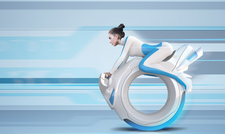What's new in Ubuntu 17.10
Back to the Future

© Lead Image © sellingpix, 123RF.com
Ubuntu is back to the first letter of the alphabet – and back to the Gnome desktop. But you'll also find lots of new stuff in the latest release.
When Mark Shuttleworth announced Ubuntu in 2004, he was extremely passionate about it. Shuttleworth saw the possibility of a third operating system in the consumer space, and many things worked in his favor. Ubuntu managed to create one of the friendliest and most vibrant open source communities.
The success of Ubuntu on the desktop made Shuttleworth even more ambitious about the mobile space, and he thought he could crack the duopoly of iOS and Android with Ubuntu Mobile. He saw a growing trend of smart TVs, and he even felt Ubuntu could offer a platform to TV vendors.
In 2011, Canonical decided Gnome 3 didn't fit into the grand scheme of Ubuntu. The Ubuntu project dropped Gnome Shell (it still used the desktop stack, just not the shell) and created its own shell called Unity that was aligned with Canonical's plans for mobile, tablets, and TVs. At the 2012 Mobile World Congress, Canonical had one of the biggest stalls, where they showcased their technologies.
[...]
Buy this article as PDF
(incl. VAT)
Buy Linux Magazine
Subscribe to our Linux Newsletters
Find Linux and Open Source Jobs
Subscribe to our ADMIN Newsletters
Support Our Work
Linux Magazine content is made possible with support from readers like you. Please consider contributing when you’ve found an article to be beneficial.

News
-
Another Linux Malware Discovered
Russian hackers use Hyper-V to hide malware within Linux virtual machines.
-
TUXEDO Computers Announces a New InfinityBook
TUXEDO Computers is at it again with a new InfinityBook that will meet your professional and gaming needs.
-
SUSE Dives into the Agentic AI Pool
SUSE becomes the first open source company to adopt agentic AI with SUSE Enterprise Linux 16.
-
Linux Now Runs Most Windows Games
The latest data shows that nearly 90 percent of Windows games can be played on Linux.
-
Fedora 43 Has Finally Landed
The Fedora Linux developers have announced their latest release, Fedora 43.
-
KDE Unleashes Plasma 6.5
The Plasma 6.5 desktop environment is now available with new features, improvements, and the usual bug fixes.
-
Xubuntu Site Possibly Hacked
It appears that the Xubuntu site was hacked and briefly served up a malicious ZIP file from its download page.
-
LMDE 7 Now Available
Linux Mint Debian Edition, version 7, has been officially released and is based on upstream Debian.
-
Linux Kernel 6.16 Reaches EOL
Linux kernel 6.16 has reached its end of life, which means you'll need to upgrade to the next stable release, Linux kernel 6.17.
-
Amazon Ditches Android for a Linux-Based OS
Amazon has migrated from Android to the Linux-based Vega OS for its Fire TV.

